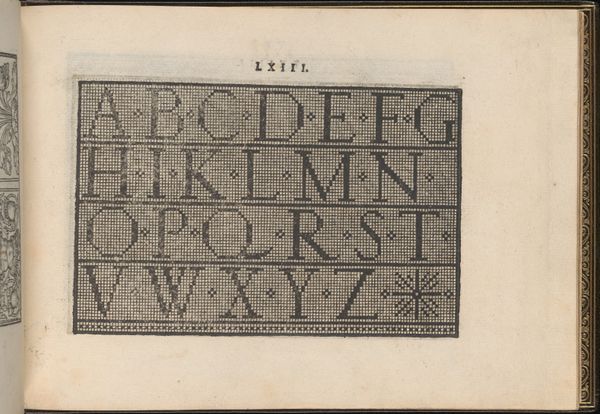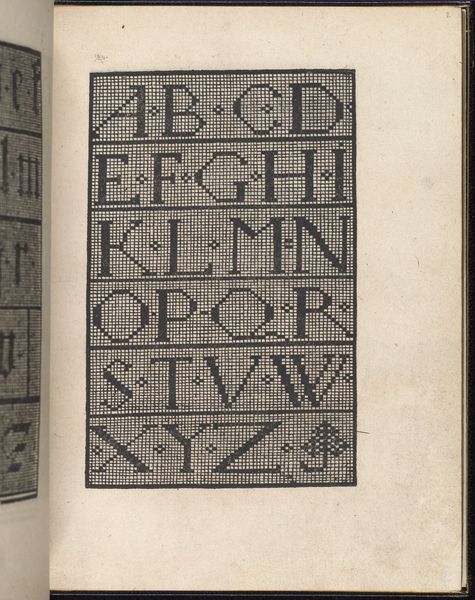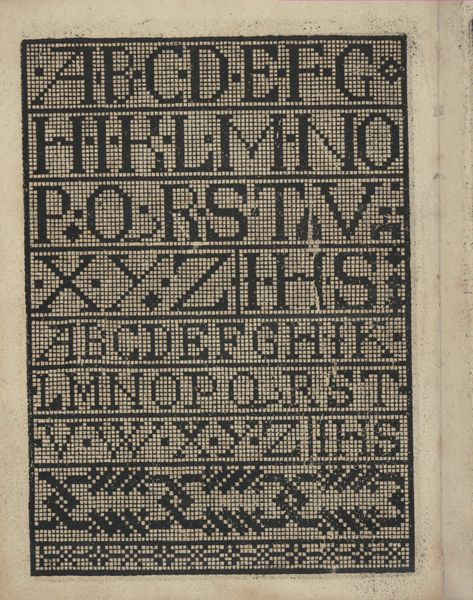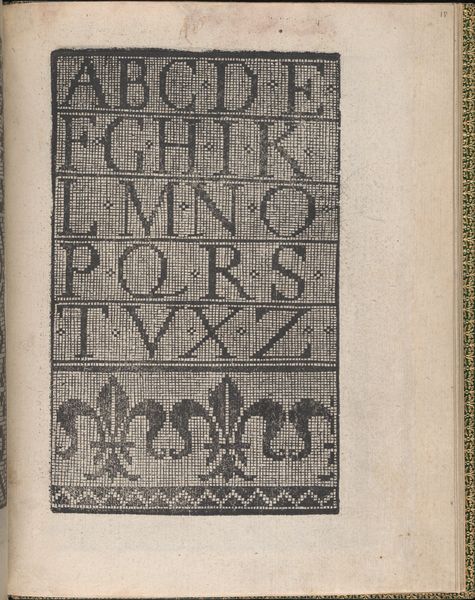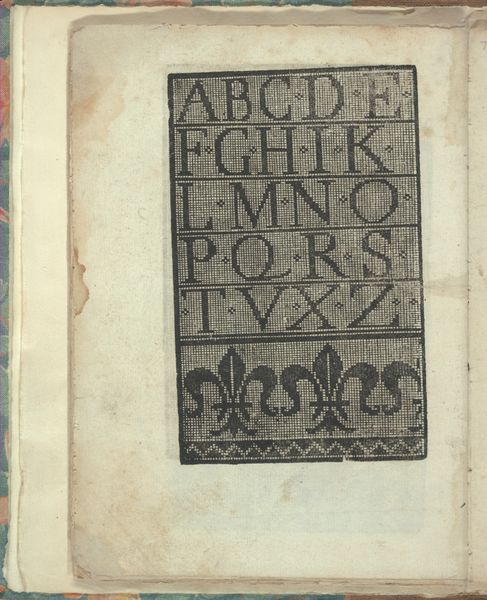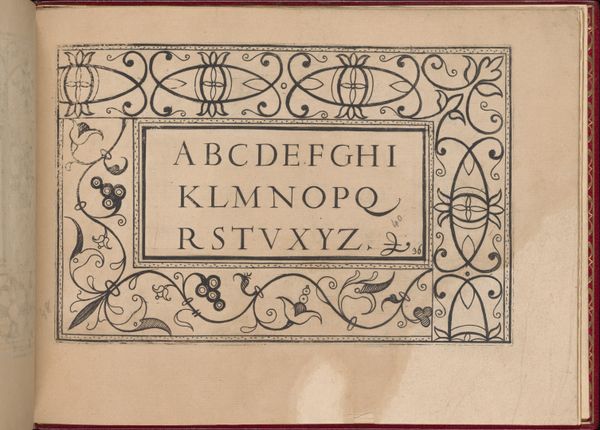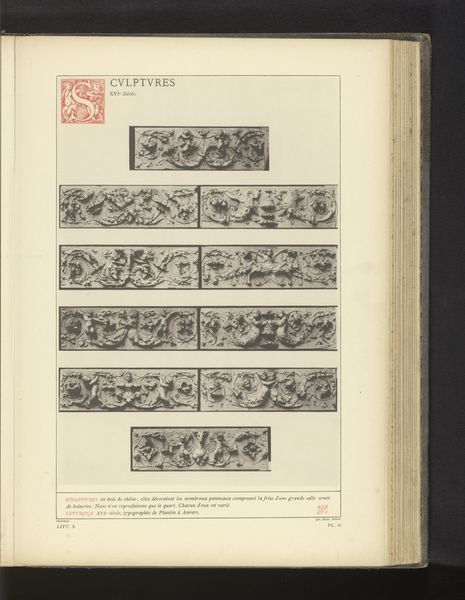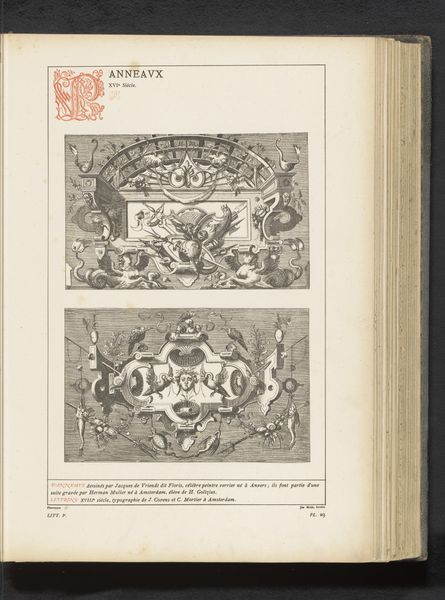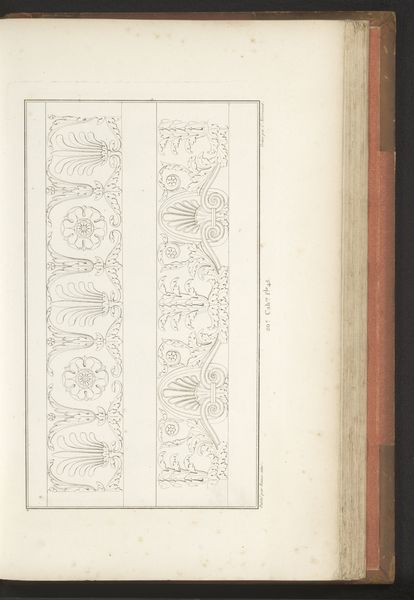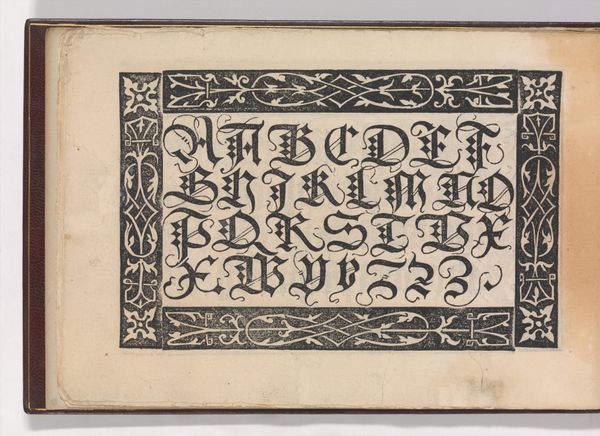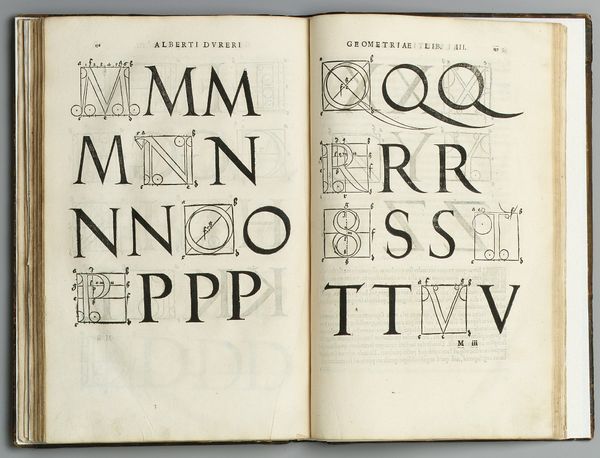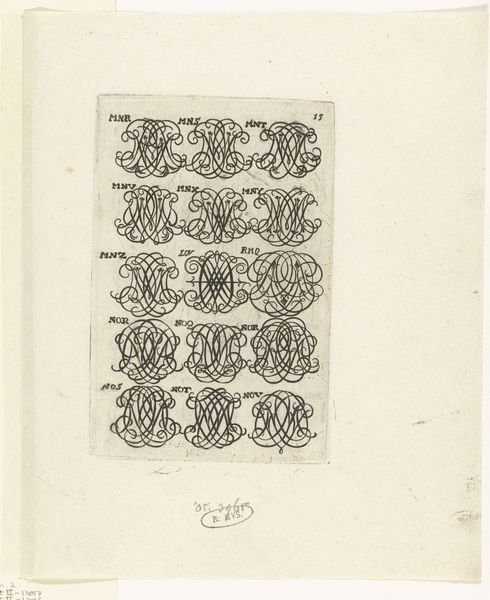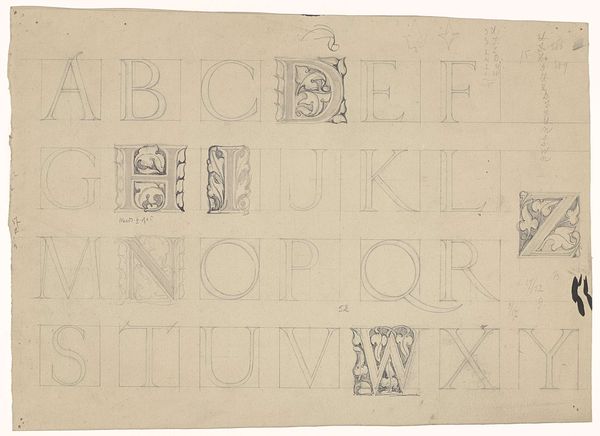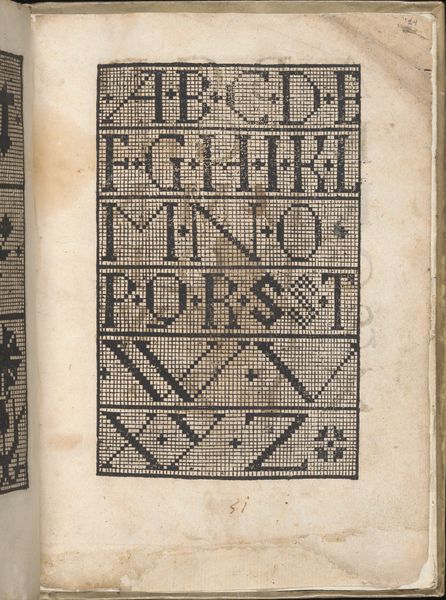
La Vera Perfettione del Disegno di varie sorti di recami, page 6 (verso) 1567
0:00
0:00
drawing, graphic-art, print, typography
#
drawing
#
graphic-art
# print
#
11_renaissance
#
typography
#
geometric
#
line
#
decorative-art
#
italian-renaissance
Dimensions: Overall: 6 5/16 x 8 7/16 in. (16 x 21.5 cm)
Copyright: Public Domain
Giovanni Ostaus created this page with woodcut print, sometime between the 16th and 17th century. It offers a set of alphabets, along with decorative friezes, for use in embroidery. In Italy at this time, pattern books such as this one played a crucial role in the world of textile production and consumption. Sumptuary laws attempted to regulate who could wear what, but the rising merchant class found ways around these restrictions. Embroidery became a key way to display wealth and status, and books like this provided the visual language for those displays. The grid system seen here reflects the practical needs of transferring designs onto fabric. The inclusion of putti and vines speaks to the era’s broader artistic embrace of classical motifs. But in this context, the art historical references must be seen alongside the social and economic realities of the time. To truly understand this image, we need to look at account books, fashion magazines, and even legal documents. Only then can we fully appreciate how art intertwines with the social fabric of its time.
Comments
No comments
Be the first to comment and join the conversation on the ultimate creative platform.
